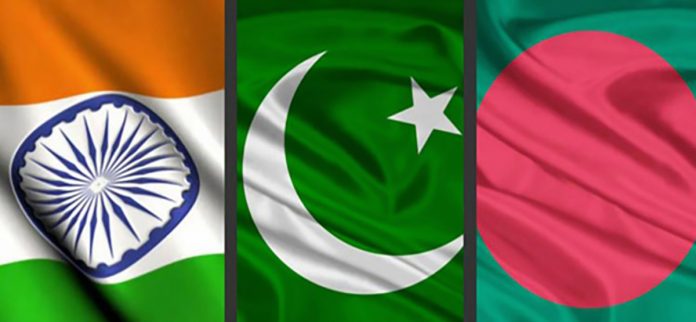South Asia, a region known for its rich cultural diversity and historical significance, is currently facing a myriad of challenges that threaten its stability and growth. Pakistan, India, and Bangladesh, three of the most populous nations in the region, are experiencing significant political and economic upheavals. These issues, ranging from social unrest to economic crises, have far-reaching implications not only for these individual countries but also for the region as a whole. The current situations in these nations, analyzing the underlying causes, potential consequences, and the broader regional impact.
Bangladesh: unrest and social inequality
Bangladesh has recently been the epicenter of significant social unrest, primarily driven by a student-led movement demanding reforms in the country’s job quota system. The system currently reserves a significant percentage of government jobs for the descendants of the 1971 warfighters, a policy many students perceive as discriminatory and outdated. The protests began at the University of Dhaka and quickly spread across the country, reflecting widespread dissatisfaction among the youth regarding job opportunities and social equity.
The unrest has brought to the forefront the broader issues of social inequality and governance in Bangladesh. Despite steady economic growth, the benefits have not been evenly distributed, leading to a widening gap between the rich and the poor. The current government faces a crucial test in addressing these grievances without escalating the situation into a larger political crisis. The potential outcomes of this unrest include a reassessment of public policies and possibly a shift in political power dynamics if the government fails to address the concerns of the protestors. This unrest according to some quarters seems to be an act of India first insisting on the Quota system and then energizing its secret operatives as Bangladesh is inclining towards China in purchasing arms as the Prime Minister of Bangladesh went to visit China after visiting India.
India: economic and political challenges
India, the so called world’s largest democracy, is currently grappling with multiple crises. The country’s economy, once one of the fastest-growing in the world, has seen a significant slowdown. According to the National Statistical Office, India’s GDP growth rate fell to 4.2% in 2019-20, down from 6.1% in the previous year. The COVID-19 pandemic exacerbated these issues, leading to a contraction of 7.3% in the 2020-21 fiscal year. High unemployment rates, with the Centre for Monitoring Indian Economy (CMIE) reporting an unemployment rate of 7.8% as of June 2024, and rising inflation have further strained the economy.
Politically, India is witnessing increasing polarization, with the ruling Bharatiya Janata Party (BJP) and the opposition parties often at loggerheads over key issues. The government’s handling of various policies, including the controversial Citizenship Amendment Act (CAA) and the farmers’ protests, has led to widespread dissent and protests. These political tensions have not only affected domestic governance but also India’s position as a self-claimed regional leader. The potential outcomes for India include prolonged economic hardship and further political fragmentation, which could undermine the country’s stability and growth prospects.
India’s false claim to fight a two-front war with the increase of defense Budget from 72 Billion US dollars to 75 Billion dollars also affected its economy. It has increased the number of armed forces personnel.
Pakistan: political and economic crisis
Pakistan is currently navigating through a severe political and economic crisis. The country’s economy is burdened with high levels of debt, with the International Monetary Fund (IMF) estimating the public debt at approximately 86% of GDP. Inflation has surged to around 12.3%, and unemployment rates have risen, compounding the economic challenges. The government, led by one of the previous governments, has struggled to implement effective economic reforms, leading to a loss of public confidence.
Politically, Pakistan is facing instability, with opposition parties challenging the legitimacy of the government. The political unrest has been marked by protests and calls for early elections. The situation is further complicated by ongoing security issues, particularly in Khyber Pakhtunkhwa (KP), which stem from Afghanistan.
Regional implications
The crises in Bangladesh, India, and Pakistan are not occurring in isolation; they are interconnected and have significant implications for regional stability and cooperation. South Asia, home to over 1.7 billion people, is a region with complex socio-political dynamics and a history of conflicts. The current situations in these three countries threaten to destabilize the region further, potentially affecting regional security, economic integration, and cooperation.
For instance, the economic slowdown in India, the largest economy in the region, can have a ripple effect on neighboring countries that rely on it for trade and investment. Consequently, the tension can rise in Kashmir, and hinder efforts towards regional peace. The unrest in Bangladesh, if not addressed, could lead to increased migration pressures on neighboring countries and strain bilateral relations.
The long-term implications for South Asia include the risk of increased poverty, reduced economic growth, and heightened security threats. The region’s ability to navigate these challenges collectively will be crucial in determining its future trajectory, especially in the wake of the current trends of rising nationalism and political polarization, which pose significant barriers to regional cooperation.
Conclusion
The recent developments in South Asia highlight the urgent need for comprehensive and coordinated responses to the political and economic challenges facing the region. Bangladesh, India, and Pakistan each face unique issues, but their crises are interlinked and have broader regional implications. Addressing these challenges requires not only domestic reforms but also enhanced regional dialogue and cooperation which has been hindered by India in pursuit of regional hegemony.
The international community also has a role to play in supporting stability and development in South Asia. By fostering dialogue, providing financial assistance, and encouraging good governance practices, global actors can help mitigate the risks and promote a more stable and prosperous region. The path ahead is fraught with challenges, but with concerted efforts from both domestic and international actors, South Asia can overcome these crises and work towards a more peaceful and prosperous future which has been denied by Indian designs.










